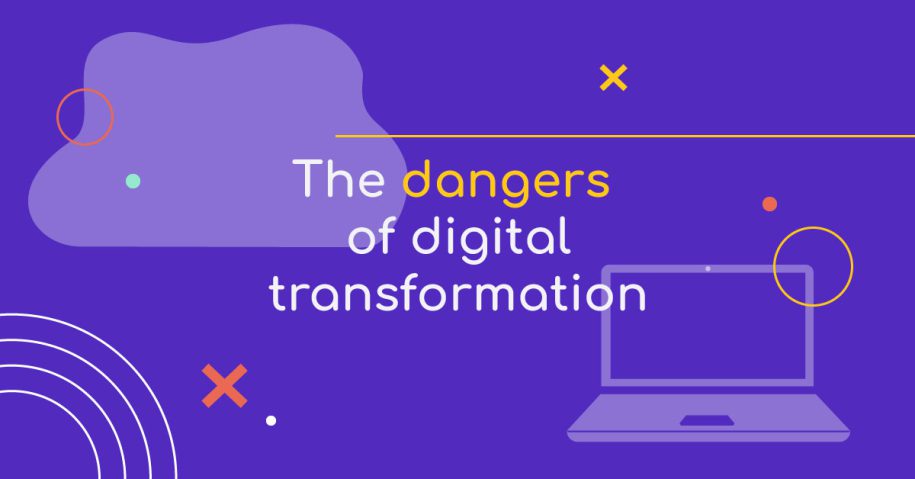In the era of Digital Transformation, more and more organizations have started dynamically transforming themselves, adopting modern digital solutions that increase productivity and automate complex processes.
Large and once “unwieldy” organizations, such as Banks or even the Public Sector have prioritized their Digital Transformation, with major projects running all over the country.
These organizations often seek a comprehensive Digital Transformation that will lead the business to a Cloud-Only solution.
However, is this solution feasible? what applies in Greece? Let’s start from the beginning!
In this article we will see:
- Digital Transformation VS Cloud Transformation
- What does a true Digital Transformation require?
- The Difficulties of a Real Digital Transformation
Digital Transformation VS Cloud Transformation
Fairly often, these two terms are conflated and used wrongly in discussions, presentations, contracts, and offers.
Digital Transformation
Digital Transformation is the integration of digital technology into all areas of a business. The result of this integration are fundamental changes in the way the business operates and delivers value to its customers.
Digital Transformation involves the use of digital technologies such as automation, AI, IoT, and Cloud Computing
to modernize and transform traditional business processes, models, and systems. The goal of Digital Transformation is to enhance efficiency, increase competitiveness and improve the customer experience.
Digital Transformation can affect various aspects of a business, such as operations, customer service, product development and even Marketing. It is an ongoing process that requires constant adaptation to changing technology and market conditions.
Cloud Transformation
Cloud Transformation or Cloud Migration refers to the movement of an organization’s IT infrastructure and applications to the Cloud. It’s a subset of Digital Transformation and aims to take advantage of the benefits of the cloud such as scalability, cost savings, and increased security.
Therefore, Cloud Transformation is a part of Digital Transformation and not the opposite.
What does a true Digital Transformation require?
Today, apart from some large organizations, it is a given that a business does not need to invest in hardware infrastructure. Instead, it can fully leverage Cloud technologies.
However, when we talk about true Digital Transformation, it’s not enough just to eliminate a physical infrastructure and move to the Cloud. This step may be just the first step in a significant decision for organizations:
To adopt new SaaS applications and move away from existing On-Premise solutions. When we refer to On-Premise applications, we mean applications that require a host environment.
For example, if an organization still maintains an old ERP that requires an SQL database, specific editions, maintenance, etc. Then practically speaking, it doesn’t gain much by moving it from a physical machine to a VM, since it still needs to maintain it with new editions, services, capacity, support, and management of new demands. In this case, there is no real difference between having a physical or virtual infrastructure.
True Digital Transformation, however, involves the adoption of new technologies and business models, the integration of digital solutions into all business processes, and the use of data and analytics to drive decision-making. This transformation requires a change in the organization’s culture, processes, and leadership.
The Difficulties of a Real Digital Transformation
Upon adoption of such a decision – change of applications, there are several difficulties that organizations need to know.
Specifically:
1. Lack of the Right Software
The local market is filled with custom solutions from providers who have not yet managed to adapt their applications to a Cloud or SaaS model. Focusing on the piece of ERP (Enterprise Resource Planning) solutions since around 1990, a plethora of IT companies chose an industry and created a centralized ERP solution.
Due to the complexity of the Greek tax system and bureaucracy, most of these solutions have not been able to fully meet the needs of organizations. At the same time, due to the criticality of the sector, organizations need to maintain such old architectures and do not feel comfortable adopting a modern ERP SaaS solution.
2. The availability of many applications and the high costs of connectivity
Many providers could diversify, offering specialized solutions to meet specific needs. This has led many organizations to adopt various SaaS solutions, resulting in 5-6 separate applications, each with different data and management environments.
This situation complicates matters for staff who must be trained on different applications and familiar with each application’s UI/UX. Additionally, the fact that each application has other data, even for the same records, creates a need for integration projects, systems insights, and data warehouses to provide every business with a 360-degree view of information.
3. Non-specialized personnel and technological obsolescence:
There are not a few employees who resist changes to established procedures and systems, fearing to adopt new technologies and approaches. Greece maintains a leading position in digital obsolescence, making both social progress and the progress of organizations and companies difficult.
Making a brief parallelism: Initially, the ancient fisherman did not need to know how to read and write, as he could do his job without that knowledge. However, now writing is essential and it is considered an obligation for a fisherman to not know how to write, as he will not be able to work.
Similarly, in the ’80s an office worker did not need to know how to use a computer as he could do his job without it. Nowadays, however, information technology is an indispensable tool for most professions.
4. The sudden emergence of the Consulting market
Often, organizations, despite the large market, struggle to find a partner with the necessary knowledge and experience to guide the organization through every step of Digital Transformation. The pace of technological change is fast, and companies need someone who can help navigate the complex landscape of digital technologies and effectively apply them to the specialized needs of the business.
NUS Solutions for your business’ real digital transformation
NUS Solutions leads digital transformation by providing innovative and comprehensive solutions for businesses to thrive in today’s rapidly evolving digital landscape.
Our technical team has the necessary knowledge and experience to guide organizations through the complex digital transformation process, ensuring that each solution is tailored to each client’s unique needs and goals.
With a focus on delivering measurable results, NUS Solutions partners with businesses to drive growth, improve efficiency, and enhance customer experiences.
Experience the power of Digital Transformation and turn your vision into reality with NUS Solutions!





…